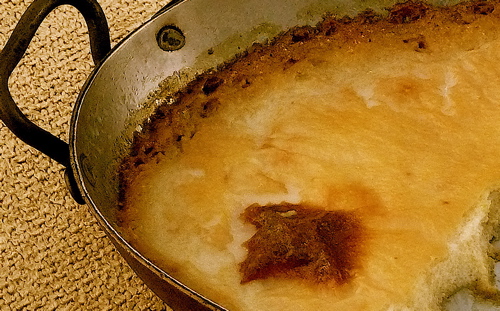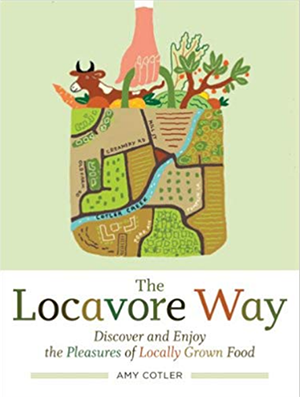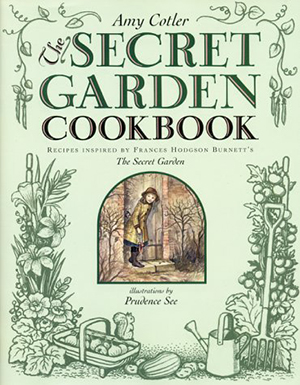 Sweet, slow cooked and back-to-the-womb satisfying, Indian Pudding is a New England classic. This version is adapted from an old James Beard recipe, using maple syrup instead of molasses along with local milk and freshly ground local flint corn. I used dried corn kernels from my Pioneer Valley Heritage Grain CSA share, which was ground into a coarse flour, but if you don’t have anything local on hand, use store-bought corn meal and cook it longer, as described in the recipe. It will still be delicious. Serves about 6
Sweet, slow cooked and back-to-the-womb satisfying, Indian Pudding is a New England classic. This version is adapted from an old James Beard recipe, using maple syrup instead of molasses along with local milk and freshly ground local flint corn. I used dried corn kernels from my Pioneer Valley Heritage Grain CSA share, which was ground into a coarse flour, but if you don’t have anything local on hand, use store-bought corn meal and cook it longer, as described in the recipe. It will still be delicious. Serves about 6
2 tablespoons unsalted butter, softened
5 cups whole milk, scalded
1/2 cup freshly ground flint corn flour or any cornmeal
1/2 cup maple syrup
1/2 teaspoon salt
1 teaspoon dried ginger
1- Preheat oven to 300°F. Butter a casserole dish dishes generously, reserving the excess.
2-Over a medium-low heat, scald the milk by warming it in a pot, then heating it until it has tiny bubbles along the edges but is not boiling. Slowly add cornmeal, whisking as you add it. Once it is all added, stir frequently until it is thickened, but still pourable, about 5-10 minutes for freshly ground corn, 15-20 for corn meal. Stir in the remaining butter, maple syrup, salt and ginger.
3-Pour into a lightly buttered casserole and bake in a 300°F. oven for about 2 to 2-1/2 hours, or until golden brown, even dark brown in spots, like he picture. (Tips: The finer it’s ground and the more shallow the baking dish the quicker the pudding cooks. With store-bought cornmeal this took about 2-1/2 hours, but the my local corn flour it took only 2. Indian pudding hardens as it cools, so make sure it isn’t hard when you pull it out.) Serve warm, as is, which is how I like it, or or traditionally with ice cream, heavy cream or even whipped cream.
It’s CSA time!
For the ultimate locavore experience, join a CSA, which is a Community Agriculture Farm. It’s the most direct way to connect with a regional farmer, nature and the flow of fresh, sustainably raised food right through the season.
What’s A CSA?
“CSA” stands for community supported agriculture. Although it denotes a kind of farming, the term has also come to mean the farm itself. CSA members, sometimes called shareholders, agree to support an environmentally responsible farm and farmer by paying upfront costs before the growing season.
Join a CSA and get a grocery bag or so of sustainably raised farm fresh food on a regular basis, usually once a week. Many CSAs also include a pick your own option on high labor crops, such as berries or cherry tomatoes. Pick-up days are especially satisfying if you can visit the farm, but even city slickers look forward to their weekly bag of startlingly fresh produce, and many visit the farm at least once a season. My book, The Locavore Way, has lots of information on CSAS, from how to decide if CSA membership is right for you to how to cook with CSA goodies.
How do you find a CSA near you?
Search for a CSA near you at the Robyn Van En Center. Or, if you live in NYC, use Just Food. In the Berkshires, where I live in Western Massachusetts, use Berkshire Grown.
Background
I was already a chef who understood fresh when, Robyn Van En, who co-founded the CSA movement in North America, and initiated me into the local food movement. Robyn’s Indian Line Farm was one of the first two CSAs in this country. She spread the word through talks and a $4 pamphlet that taught farmers around the county how to start a CSAs on their own.
Robyn has since died, but the CSA center at Wilson College which bears her name, estimates there are close to 2000 CSAs in North America. Here’s a good article about the CSAs and their history if you want more.
Sustainable Coffee
Continuing the subject of what locavores do about food that isn’t produced regionally but they won’t give up, here’s Short Talk about Sustainable Coffee. It’s worth noting that the words “naturally grown” are bandied about and that they can mean two things.

 Last night, I unexpectedly brought this blog’s coffee and Indian Pudding together. My evening java kept me up late, so I coasted on the high by polishing off most of this Indian pudding. Hmmmm (and ouch!)
Last night, I unexpectedly brought this blog’s coffee and Indian Pudding together. My evening java kept me up late, so I coasted on the high by polishing off most of this Indian pudding. Hmmmm (and ouch!)






Hi Amy,
You mentioned eggs in the blurb about the recipe, but then they don’t appear in the recipe itself. Am I missing something?
Rebeca
Fairly amusing post. Couldn’t be written much better. Browsing this post reminds me of my old friend. She always kept babbling about this. I will forward this post and I’m pretty sure it will be a good read for ’em. Thanks for sharing!
I always suggest to my brides to just let us handle the work, that’s what we are getting paid.